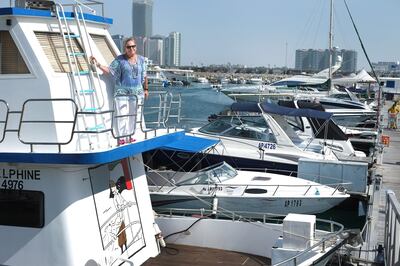Someone asked me recently about how many cycles of the Abu Dhabi property market I’d experienced during the decade and a half I’ve lived in the city. The enquiry was prompted by a conversation about the slings and arrows of renting a place to live and some of their experiences along the way. It’s an interesting question.
Data provides us with regular snapshots of the market in near real-time, highlighting microclimates and trends. Reports into rental activity at the end of last year found that there were moderate price rises in popular areas, such as Reem Island, and larger leaps in upmarket areas, such as Saadiyat Island and Yas. That seems to have been the picture for the past couple of years. Outside of the city’s noticeable hotspots, the market moves as the market moves, which is steadily, but it didn’t always do that.
As tempting as it was to think of a number and triple it when estimating how many turns of the market I’d witnessed or to think of the past 15 years as a series of mini cycles, the answer I gave was one, or a single transition. Here’s why.
The explanation for that answer begins 16 years ago, about the time the first edition of The National was published in April 2008, which led with the news that action was being taken against “maverick property agents” amid a very hot property market in Abu Dhabi.

An official told the newspaper that there were clear signs of profiteering because there was a shortage of both residential and commercial units. A good chunk of the display advertising in that first print edition was for off-plan and forthcoming property developments in Abu Dhabi and Dubai, which also tells you a lot about what was going on at the time.
We also reported that some prospective tenants were being asked to pay a fee even to view a property by some agents. It wasn’t unheard of for the prospective price of a home to change from morning to afternoon.
The country was going through an extraordinary period of construction and expansion, but this growth also created fissures.
Next to no supply in new housing stock coupled with rapid population growth meant that there were challenges for those looking for a place to live. Certainly, that was my experience. All the big new developments that could have helped alleviate some of those broader market pressures, such as Reem, Raha and Saadiyat, were years away from moving from the drawing board to reality.
That also meant that it was normal for neighbours to be paying rents in established areas determined by when they moved into the property rather than being based on the nominal true value of the flat or villa. With housing stock in short supply, every time a tenant vacated a property, it presented an opportunity for agents and owners to see what the market would bear. Generally, the answer was a lot more than the previous day, month or year.
In 2009, on the day I first moved into the mid-island neighbourhood where I still live today, someone else was moving out of a villa across the road. They were leaving the country after a long stint in the UAE and had been told that the new tenants in their villa had signed a deal to rent the property for more than double what they had been paying.

It was the kind of conversation that was typical of the time.
If you were already in accommodation back then, rent controls helped moderate the market for you. The rent cap, introduced almost 20 years ago in Abu Dhabi in 2006, had been effective to that point in calming rampant rent renewal inflation by capping rent increases to 5 per cent a year, but hadn’t quelled the market all together.
If you weren’t in a property already or had to move, the market was moving far too fast. If you delayed over a contract, the price could change or you could lose out to another bidder.
There were other, more quirky signs that the market was hot, such as The National’s periodic reporting on houseboat living as a way of escaping the ups and downs of renting on land, although these pieces also told us that the rising tide of rents lifted all boat prices, too.
Thankfully, the storm began to subside as economic rhythms changed over a couple of years.
By the time the rent cap was removed in 2013, supply and demand were in much better balance. The cap was reinstated in 2016 and its existence provides much-needed protection for both landlords and tenants and a framework for negotiations over renewals, although some would advocate for the introduction of a rent calculator similar in nature to the system in place in Dubai.
So that was the single phase of the market, transitioning from the challenges of the late aughts to the relative calm of the 2020s.
There will always be hotspots and anomalies in the market – those are the exceptions that prove the rule – but there is now supply and choice, when a decade and a half ago there was an absence of either of those things. In other words, the fundamentals have now changed – in a good way.





